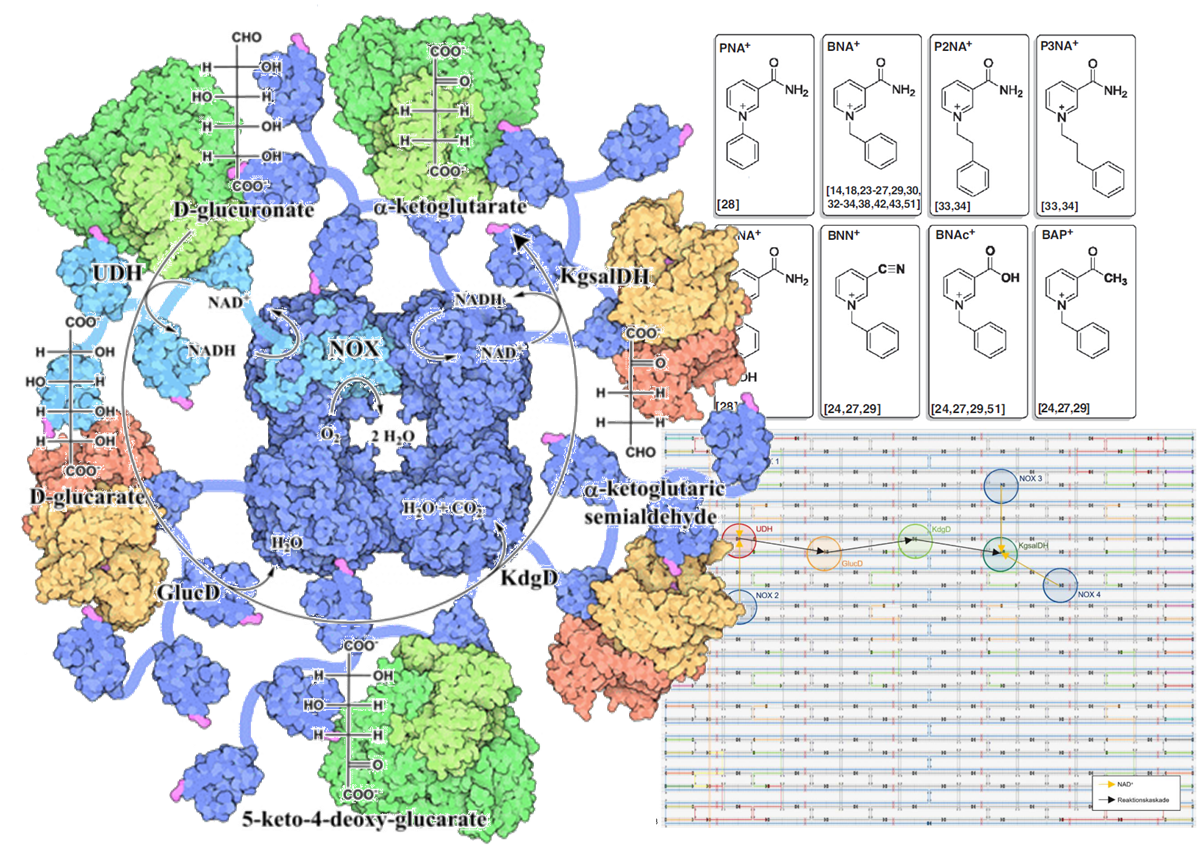
The overall goal of our work is to utilize biogenic resources for the sustainable production of chemicals and materials. Structural design at super-molecular level is the basis for the two general research topics within this field: The generation of bio-based or bio-templated functional macroscopic materials and the design of biocatalytic reaction cascades for efficient “green” conversion technologies. Our work, accordingly, while being built upon basic research questions ultimately aims at large scale applications.
Within the first topic we work on carbohydrate polymers with complex, yet highly regular repeating units and engineer their structure for new material properties. The fusion of the carbohydrate world with the protein world should allow the construction of new hybrid polymers.

In biocatalysis our focus is on the design of artificial synthetic reaction cascades. This starts with enzyme discovery and enzyme engineering to obtain biocatalysts with new activities. By applying in vitro transcription/translation in microfluidics it is possible to accelerate the process substantially. However, for ths the design of detection modules (e.g. using aptamer technology) as well the standardized amplification of genetic elements is essential comprising nucleotide-foldamere and particle design.
Further optimization of conversion is achieved by building artificial biocatalytic complexes where the cascade enzymes are linked together with biomimetic cofactors onto supermolecular structures. By diminishing diffusion limitation and increasing the stability as well as recyclability these “BC-Nanomachines” can substantially increase the conversion efficiency.
References
- C. Schilling, M. A. G.Koffas, V. Sieber, J. Schmid, Novel Prokaryotic CRISPR-Cas12a-Based Tool for Programmable Transcriptional Activation and Repression. ACS Synthetic Biology2020 , 9 (12), 3353–3363
- P. N. Stockmann, D. Van Opdenbosch, A. Poethig, D.L. Pastoetter, M. Hoehenberger, S. Lessig, J. Raab, M. Woelbing, C. Falcke, M. Winnacker, C. Zollfrank, H. Strittmatter, V. Sieber, Biobased Chiral Semi-Crystalline or Amorphous High-Performance Polyamides and their Scalable Stereoselective Synthesis. Nature Comm. 2020 , 11 (1), 1-12
- S. Sutiono, J. Carsten, V. Sieber, Structure‐Guided Engineering of α‐Keto Acid Decarboxylase for the Production of Higher Alcohols at Elevated Temperature. ChemSusChem 2019 , 11 (18), 3335-3344
- U. Obst, T. K. Lu, V. Sieber, A Modular Toolkit for Generating Pichia pastoris Secretion Libraries. ACS Synthetic Biology 2016 , 6 (6), 1016-1025
- B. Beer, A. Pick, V. Sieber, In vitro metabolic engineering for the production of a-ketoglutarate. Metabolic Engineering, 2017 , 40, 5-13
- J. M. Sperl, J. Carsten, J. K. Guterl, P. Lommes, V. Sieber, Reaction Design for the Compartmented Combination of Heterogeneous and Enzyme Catalysis. ACS Catalysis 2016 , 6 (10):6329–6334

